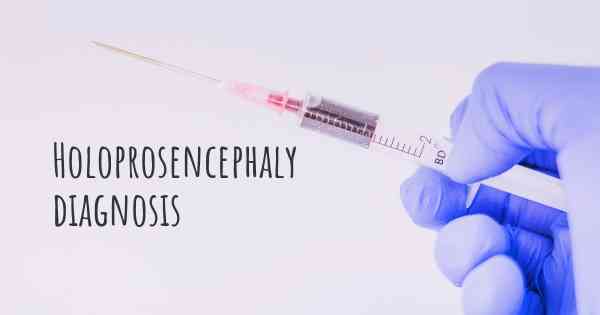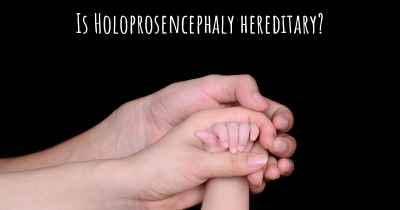How is Holoprosencephaly diagnosed?
See how Holoprosencephaly is diagnosed. Which specialists are essential to meet, what tests are needed and other useful information for the diagnosis of Holoprosencephaly

Holoprosencephaly is a rare and complex brain malformation that occurs during early fetal development. It is characterized by the incomplete separation of the brain into two hemispheres, resulting in various degrees of brain and facial abnormalities. Diagnosing holoprosencephaly typically involves a combination of prenatal screening tests, imaging studies, and clinical evaluations.
Prenatal screening tests:
During pregnancy, certain screening tests can help identify potential abnormalities in the developing fetus. These tests include:
- Ultrasound: An ultrasound examination is often the first step in detecting holoprosencephaly. It uses sound waves to create images of the developing fetus and can reveal structural abnormalities in the brain and face.
- Maternal blood tests: Blood tests can measure certain substances in the mother's blood that may indicate an increased risk of fetal abnormalities, including holoprosencephaly.
- Chorionic villus sampling (CVS) or amniocentesis: In some cases, if the screening tests suggest a higher risk of holoprosencephaly, a healthcare provider may recommend these diagnostic tests. They involve sampling cells from the placenta (CVS) or amniotic fluid (amniocentesis) to analyze the fetal chromosomes and detect any genetic abnormalities.
Imaging studies:
If holoprosencephaly is suspected based on the screening tests or clinical signs, additional imaging studies may be performed to confirm the diagnosis and assess the severity of the condition. These imaging techniques include:
- Magnetic resonance imaging (MRI): MRI provides detailed images of the brain and can help visualize the structural abnormalities associated with holoprosencephaly. It can also help determine the extent of brain malformation and identify any associated brain abnormalities.
- Computed tomography (CT) scan: CT scans use X-rays to create cross-sectional images of the brain. They can provide additional information about the brain structure and any associated facial abnormalities.
- Transfontanelle ultrasound: This type of ultrasound is performed in newborns and infants by placing an ultrasound probe on the soft spots of the baby's skull. It can help assess the brain structure and identify any abnormalities.
Clinical evaluations:
Alongside the screening tests and imaging studies, a thorough clinical evaluation is crucial in diagnosing holoprosencephaly. This evaluation involves:
- Physical examination: A healthcare provider will carefully examine the baby's head, face, and body for any characteristic features associated with holoprosencephaly, such as facial abnormalities, cleft lip or palate, and other physical signs.
- Developmental assessment: Evaluating the baby's developmental milestones and neurological function can provide additional clues to the presence and severity of holoprosencephaly.
- Genetic testing: In some cases, genetic testing may be recommended to identify specific genetic mutations or chromosomal abnormalities associated with holoprosencephaly.
It is important to note that the diagnosis of holoprosencephaly can vary in accuracy and certainty depending on the severity of the condition and the stage of fetal development. A multidisciplinary approach involving obstetricians, geneticists, neurologists, and other specialists is often necessary to ensure an accurate diagnosis and provide appropriate counseling and management options for affected individuals and their families.








